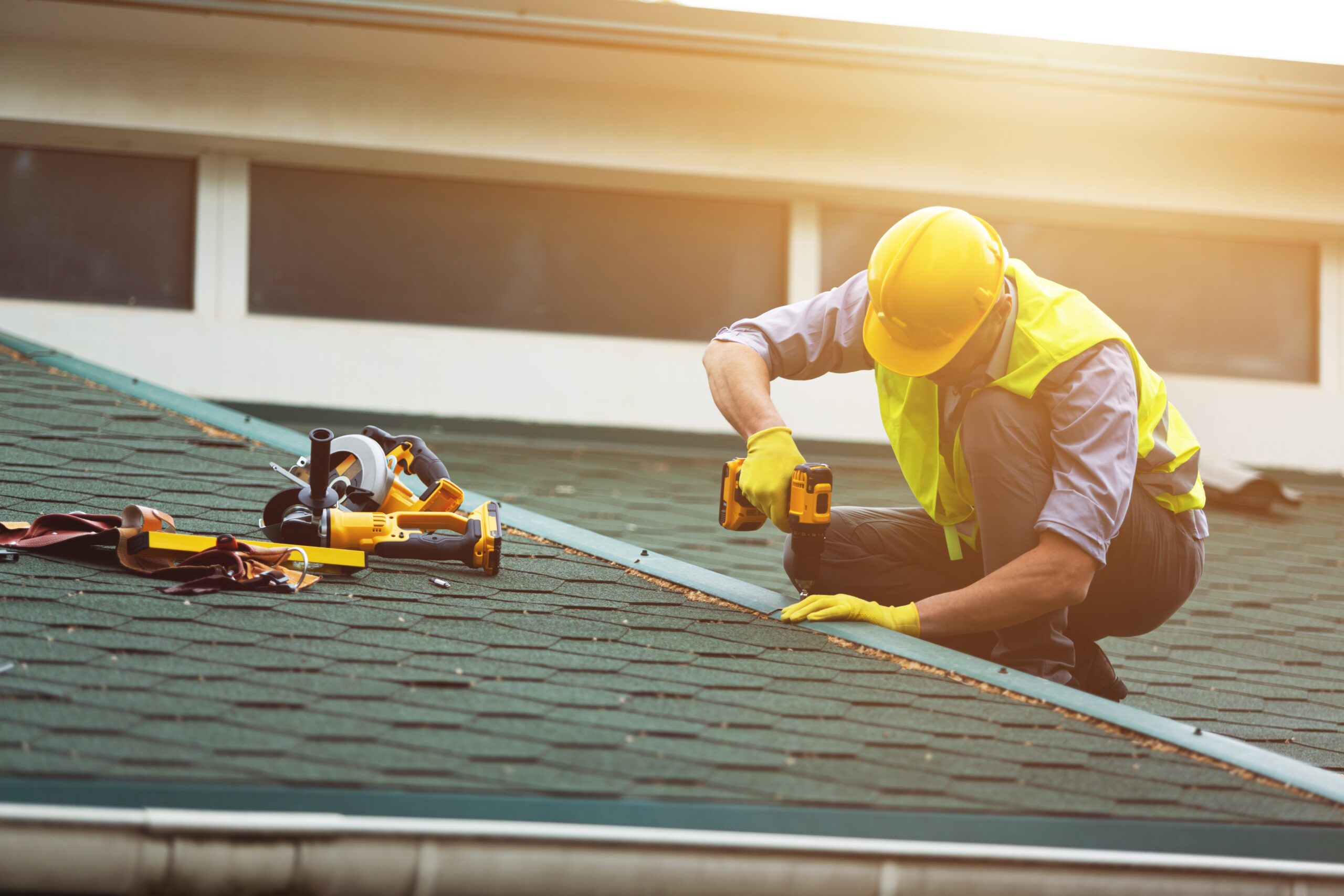
Your roof is your home’s first and most critical line of defense against the elements. From scorching summer sun to high-speed wind and heavy rain, it takes a beating every day. While a roof is built to last, wear and tear are inevitable, leading to a need for repair.
If you’re a homeowner, knowing the most common roof problems can help you spot damage early and save thousands of dollars on extensive overhauls.
So, what is the most frequent call received by roofing contractors?
The Most Common Roof Repair: Flashing and Shingle Replacement
The single most common roof repair performed across residential homes is addressing damage related to missing, cracked, or curled shingles/tiles and leaks originating from damaged or failing roof flashing.
These two issues are often related: damaged shingles expose the underlayment, and compromised flashing allows water to bypass the shingle system entirely, both leading to the most pervasive problem — water leaks.
What Is the Most Common Roof Damage?
The repairs listed above are driven by several common types of damage:
- Missing or Damaged Shingles: Wind is the primary culprit, lifting and tearing away shingles, especially on older roofs. Once a shingle is gone, the underlying layers are exposed to immediate water damage.
- Failing Flashing and Pipe Boots: Flashing is the metal or plastic material used to seal joints and penetrations on your roof. The rubber seals (pipe boots) around vent pipes dry out and crack due to UV exposure, and metal flashing around chimneys and skylights can warp or detach, creating an open channel for water.
- Gutter Issues and Ice Dams: Clogged gutters cause water to back up onto the roof, leading to fascia damage or, worse, infiltrating under the shingles — often resulting in expensive repairs at the roof’s edge.
Where Do Most Roof Leaks Occur?
Most homeowners assume a leak occurs in the middle of a shingle field, but 90% of roof leaks actually happen at points of penetration or transition — areas where the roof surface is interrupted or changes direction.
The most vulnerable areas on your roof include:
- Roof Vents and Pipes: The synthetic rubber or neoprene pipe boots that seal vent pipes are highly susceptible to UV damage and are statistically one of the most common leak sources.
- Chimneys and Skylights: These structures require precise metal flashing (step flashing, counter flashing) to divert water. If the caulk or sealant fails, or the flashing warps, water pours straight into the attic or down the wall cavity.
- Roof Valleys: This is where two planes of the roof intersect, creating a natural funnel for massive amounts of rainwater. If the valley flashing is compromised, the high volume of water can quickly cause a major leak.
Minor vs. Major Roof Repair: What Is the Difference?
Understanding the severity of the damage is key to budgeting and planning. Roofing problems generally fall into two categories.
What Is Considered a Minor Roof Repair?
Minor repairs are localized fixes designed to stop active leaks or prevent potential damage from worsening. They are typically completed quickly and are inexpensive compared to full replacements.
| Minor Repair Examples | Description |
|---|---|
| Shingle/Tile Replacement | Replacing a handful of missing, cracked, or uplifted shingles in an isolated spot. |
| Flashing Re-Sealing | Applying new sealant around pipe boots or re-caulking loose flashing at a chimney. |
| Gutter Repair | Re-securing a loose gutter section, patching a small hole, or clearing a significant clog. |
What Is Considered a Major Roof Repair?
Major repairs involve large-scale damage that threatens the structural integrity of your home. These issues require extensive labor and material costs and often precede a full roof replacement.
| Major Repair Examples | Description |
|---|---|
| Structural Damage | Addressing a sagging roof deck, rot in the rafters or trusses, or widespread water intrusion that has compromised the wood decking. |
| Extensive Leak Repair | A persistent leak that has led to widespread mold, mildew, or rot in the attic insulation and sheetrock/ceiling below. |
| Partial or Full Re-Roofing | Damage is so widespread (e.g., covering more than 50% of a roof section) that a small patch job is inefficient or impossible. |
Is Roof Repair Covered Under Homeowners Insurance?
The question of insurance coverage is the most important for many homeowners. The simple answer: it depends on the cause of the damage.
When Insurance Covers Your Roof Repair (Covered Peril)
Your homeowners insurance policy (Dwelling Coverage) is designed to protect you from sudden, accidental damage caused by a covered peril, such as:
- Weather: Hail, windstorms, lightning, or the weight of ice and snow.
- Accidents: Falling objects (like a tree or limb), fire, theft, or vandalism.
If a severe windstorm rips off your shingles, your insurance will likely cover the cost of repair or replacement (minus your deductible).
When Insurance Will NOT Cover Your Roof Repair (Exclusions)
Insurance policies explicitly exclude coverage for damage that results from homeowner neglect, age, or lack of maintenance. Exclusions typically include:
- Wear and Tear: Damage that happens gradually over time, like an old, brittle roof or shingles naturally aging and losing granules.
- Poor Maintenance: Damage that results from ignoring maintenance issues, such as neglecting to clean your gutters or failing to replace a cracked pipe boot.
- Mold/Rot: If mold or rot develops over time due to an unaddressed, slow leak, the initial water damage may be covered, but remediation for long-term rot may be excluded or limited.
Get a Professional Assessment to Protect Your Home
Whether you’re dealing with a few missing shingles or a major leak, prompt attention is crucial to preventing a minor repair from becoming a costly replacement. The key to effective roofing maintenance is regular professional inspection.
For expert assessment, timely repair, and guidance on the best long-term solution for your home, trust the professionals.
Contact IK Ideals Contractor today for a comprehensive roof inspection and repair estimate.
